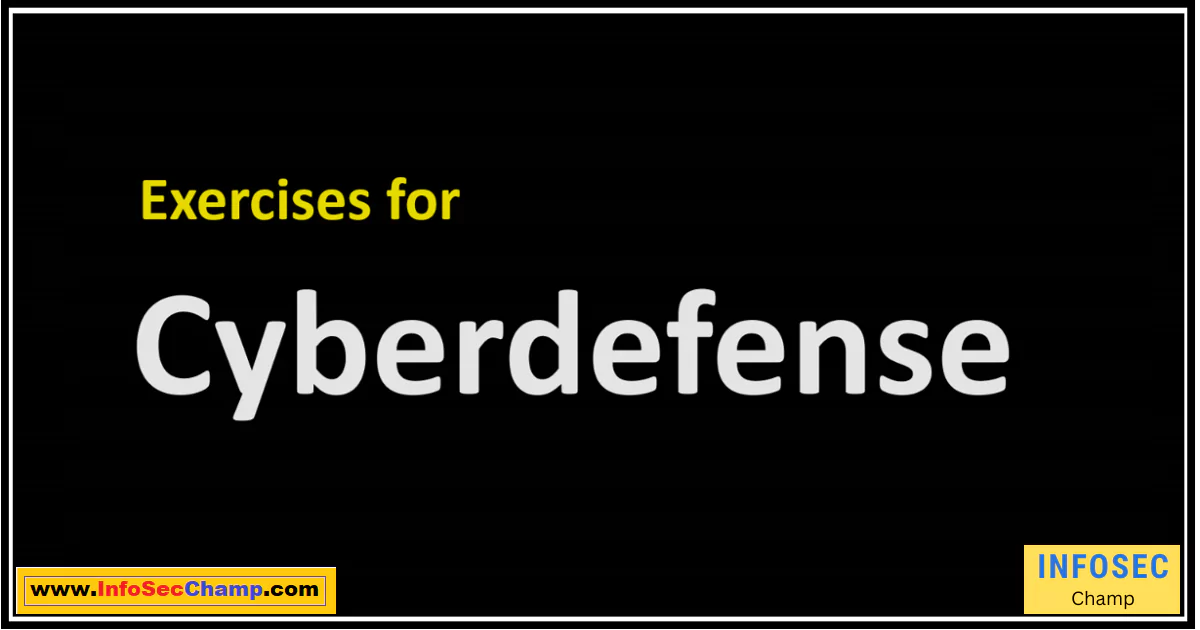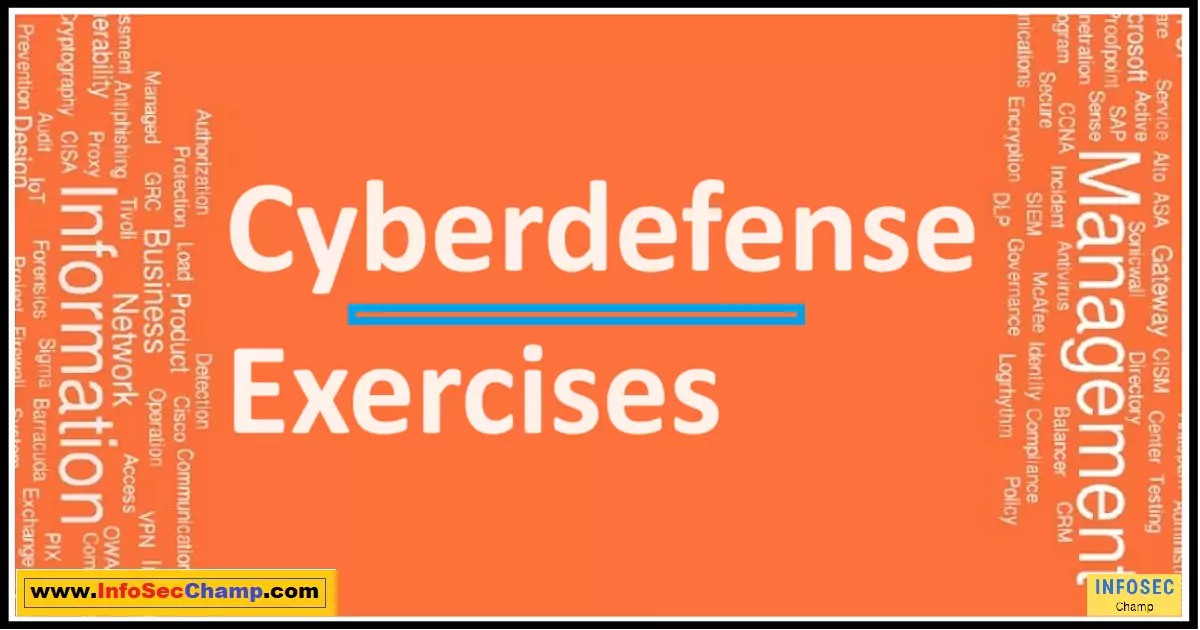Cyberdefense exercises are vital for building robust defenses against ever-evolving cyber threats. As hackers deploy increasingly sophisticated attacks against networks and data, organizations must regularly test and update their security protocols. Well-designed cyberdefense exercises equip personnel to detect, analyze, and respond to cyberattacks with speed and precision.
By simulating real-world security incidents in a controlled setting, cyberdefense exercises enable teams to practice response plans and shore up vulnerabilities. Both technical and non-technical staff benefit from hands-on experience prioritizing threats, communicating challenges, and implementing solutions as a coordinated unit. Superior training through cyberdefense exercises is indispensable for hardening defenses and minimizing business disruption and data loss when actual attacks strike.
Assess Incident Response Capabilities
Cyberdefense exercises enable organizations to evaluate the readiness of their incident response teams and identify gaps in capabilities. Exercises should assess detection, analysis, containment, eradication and recovery processes through realistic attack scenarios.
Key areas to test include:
- Speed of threat detection across endpoints, networks, and cloud environments
- Accuracy of alert triage and prioritization by security analysts
- Coordination between incident responders, IT, and other internal teams
- Decision-making authorities during critical response steps
- Availability of playbooks, tools, and resources for containment and eradication
- Minimizing business disruption during system/service recovery
Post-exercise debriefs should capture strengths, weaknesses, and recommendations to improve cyberdefense through people, processes, and technology. Repeated exercises over time demonstrate progress in maturing incident response capabilities.
Identify Security Gaps
Cyberdefense exercises spotlight gaps and vulnerabilities in security architectures, configurations, controls and staff proficiencies. Red/Blue team simulations model how real-world adversaries could infiltrate networks via phishing, malware, unpatched systems or misconfigurations to access sensitive data.
Failed detections and mitigations reveal blindspots for improvement such as:
- Lacking segregation/micro-segmentation between critical systems
- Weak identity and access management controls
- Undetected malware persistence and lateral movement
- Poor visibility across hybrid environments
- Overdependence on prevention vs. timely detection
- Insufficient logging or monitoring of admin/privileged access
- Weak BYOD/IoT device management
- Limited capability to detect advanced threats
Closing security gaps requires updating tools, policies, training, and resources based on findings.
Build Coordination Skills
Cyberdefense exercises enable diverse teams to improve coordination critical for incident response:
- Security: threat detection/analysis, containment, eradication
- IT: system/service availability, recovery, patching
- Legal: compliance issues, law enforcement reporting
- Communications: internal/external status updates, reputation management
- Business units: assess damage, continuity of operations
Exercises establish clear roles & responsibilities, decision escalation pathways, synchronized messaging and information sharing. After-action reviews identify areas for better collaboration, knowledge transfer and joint readiness for real-world cyberattacks.
Test Technologies and Processes
Cyberdefense exercises validate the effectiveness of security tools and processes under simulated attack conditions, including:
- Prevention: firewalls, IPS/IDS, antimalware, sandboxing, email/web gateways
- Detection: EDR, SIEM, behavior analytics, deception technology
- Response: threat intel feeds, automation playbooks, policy enforcement
- Hardening: system baseline configuration, vulnerability mgmt, patching
- Monitoring: asset inventory, network traffic, user activity logging
- Analysis: data correlation, forensics, reverse engineering
- Communications: alerting, status dashboards, reporting
Technology and process weaknesses revealed through exercises direct infosec investments towards solutions with high impact for strengthening cyberdefenses.
Defeat Cyberattacks with these 7 Unconventional Cyberdefense Exercises
| Exercise Type | Description | Benefits |
|---|---|---|
| Red Team | Authorized simulated attacks | Find security gaps |
| Purple Team | Joint red/blue team activities | Improve detection & response |
| Crisis Communications | Refine messaging, media interactions | Bolster reputation resilience |
| Cyber War Games | Strategic decision-making simulations | Validate incident response plans |
| Bug Hunts | Crowdsourced vulnerability discovery | Identify overlooked risks |
| Social Engineering Tests | Simulated phishing, impersonation attempts | Raise security awareness |
| Cyber Ranges | Immersive virtual environments | Practice skills in lifelike scenarios |
Leverage Red Team Attacks to Probe Network Vulnerabilities
Red team exercises involve authorized cybersecurity personnel attacking an organization’s infrastructure using techniques that real-world adversaries could deploy. By penetrating defenses and gaining access to sensitive systems, red teams provide unparalleled insights into vulnerabilities for remediation. Areas typically tested include phishing susceptibility, malware infections via removable media, lateral movement between segmented environments, privilege escalation, and data exfiltration.
Defenders benefit by improving threat monitoring, tightening configurations and security controls, and hardening infrastructure against sophisticated attackers. Well-structured red team activities deliver measurable improvement in security posture and risk reduction.
Design Cyber Range Environments to Mimic Real-world Threats
Cyber ranges create virtual environments mirroring an organization’s networks, applications, endpoints and data. Ranges enable incident response teams to hone skills against simulated threats in replications of production systems, without disrupting real operations.
Cyber ranges facilitate repetitive hands-on practice for skills like threat hunting, dissection of advanced malware, controlled system hack-backs and coordinated team exercises.
Configurable ranges can model hybrid infrastructure, operational technology, industrial control systems, and even complex supply chain ecosystems. Cyber ranges immerse personnel in hyper-realistic training to ready defenses against emerging attack techniques.
Develop Scenarios Encompassing Physical, Cyber, and Communications Dimensions
Effective cyberdefense exercises intertwine cybersecurity aspects with physical security and communications challenges that manifest during real-world attacks.
Scenarios should address issues like:
- Site access and surveillance evasion by threat actors
- Impersonation of personnel, vendors, or government entities
- Interdepartmental coordination for investigations
- Legal obligations for law enforcement interactions
- PR messaging, social media monitoring, and reputational impact
- Third-party communications for transparency and potential liability
- Business continuity with technology or facility disruption
- Safety risks and evacuation protocols
Exercises spanning converged security, IT, communications and business dimensions reveal gaps far beyond pure cyber concerns.

Incorporate Lessons Learned to Continuously Strengthen Defenses
The ultimate measure of any cyberdefense exercise is translating insights into concrete improvements.
Effective Lessons Learned programs:
- Perform thorough debriefs with participants from all involved teams to capture feedback
- Quantify and prioritize gaps uncovered in people, process,es and technology
- Update security policies, controls, and architectures as warranted
- Address critical skill gaps with role-specific training
- Develop lightweight drills to periodically reassess areas of past weakness
- Propagate findings internally to champion and fund security programs
- Share anonymized lessons with the industry for collective defense improvement
- Maintain updated metrics to demonstrate risk reduction over successive exercises
Formal lessons learned drive lasting gains in cyber defenses and resilience.
Prioritize Investments in Security Solutions with Maximum Impact
Cyberdefense exercises guide cost-effective investments toward initiatives that strengthen incident response capabilities. When scoped appropriately, exercises can objectively highlight technology and process areas most in need of budget and talent allocation.
Key priorities revealed include:
- Endpoint visibility and controls to impede attacker lateral movement
- Automation to accelerate threat containment and neutralization
- Improved analytics to enhance threat hunting and detection efficacy
- Security training tailored to skill gaps uncovered
Incident response platforms expediting these 6 critical steps:
- Detect: Asset inventory, behavior monitoring and analytics
- Analyze: Threat intel, managed services, forensics
- Contain: Network segmentation, endpoint isolation
- Eradicate: Eliminate footholds, enforce application whitelisting
- Recover: Restore systems and data from clean backups
- Learn: Continuously improve the cyberdefense lifecycle
Principles for designing effective cyberdefense exercises
Cyberdefense exercises validate capabilities against simulated threats in a controlled environment to:
- Assess people, processes, and technologies
- Uncover security gaps for remediation
- Improve coordination across teams
- Provide hands-on training for skills development
- Inform strategic priorities and investments
Effective exercises apply proven principles including:
- Realistic scenarios reflecting current threats
- Clear objectives and success criteria
- Dedicated Red Teams playing the adversary role
- Focus on detecting and responding to in-progress attacks
- Integrate lessons learned into concrete security improvements
- Test crisis communications and reputation resilience
- Incorporate business continuity challenges
- Maintain metrics to track risk reduction over successive exercises
Following established design principles allows organizations to maximize returns from investments in cyber defense exercises.
Conclusion:
Cyberdefense exercises are indispensable investments for building robust defenses against ever-evolving cyber threats. Well-designed exercises assess the readiness of security programs, technologies, and staff through simulated attacks in controlled environments. They enable organizations to uncover vulnerabilities, improve coordination, validate processes, and develop the skills to detect, analyze, and respond to incidents.
Superior training through cyber defense exercises minimizes business disruption when actual attacks occur. By incorporating continuous improvements identified during exercises, organizations can optimize cybersecurity budgets and talent. Ongoing metrics demonstrate the risk reduction achieved over successive exercises. In today’s threat landscape, comprehensive cyber defense exercises transition organizations from reactive to proactive security postures.

FAQs:
Q: Why are cyberdefense exercises important?
A: They assess readiness, identify gaps, improve response skills, and minimize the business impact of real cyberattacks.
Q: What are the benefits of cyber defense exercises?
A: Finding weaknesses to strengthen defenses, training personnel, testing technologies, and improving coordination across teams.
Q: What makes an effective cyber defense exercise?
A: Realistic threat scenarios, dedicated red teams, actionable lessons learned, integrated communications, and business continuity components.
Q: How often should organizations conduct cyberdefense exercises?
A: Annually at minimum, with more frequent discussion-based exercises to maintain readiness.
Q: What are the different types of cyberdefense exercises?
A: Red team, blue team, purple team, cyber ranges, cyber war games, social engineering tests, bug bounties.
Q: How can I start a cyberdefense exercise program?
A: Get leadership support, build a business plan, start small (e.g. tabletop exercise), focus on objectives, and quantify benefits.
Q: What makes a good cyber defense exercise scenario?
A: Mirrors current real-world attacks, provides sufficient technical details and involves multiple response teams.
Q: Who should participate in cyberdefense exercises?
A: Security analysts, incident responders, IT, communications, legal, and business units.
Q: How do you prepare for a cyberdefense exercise?
A: Review processes/playbooks, outline roles/responsibilities, provision exercise systems, and establish communications plans.
Q: What should be included in a cyberdefense exercise debrief?
A: Capture feedback, quantify gaps, rank priorities, and assign improvement actions.
Golden Quotes:
“The more you sweat in peace, the less you bleed in war.” – Chinese proverb

